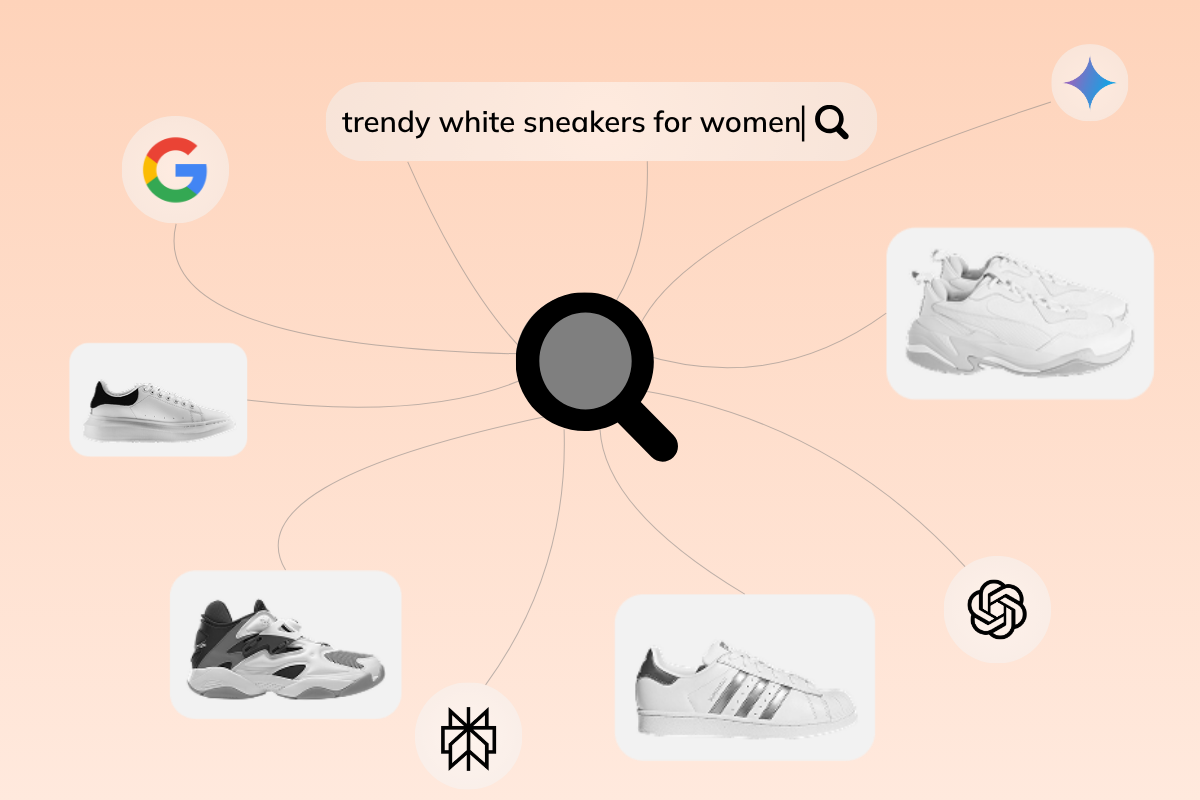Why semantic search is the secret weapon for long-tail SEO
Estimated reading time: 4 minutes

Semantic search is gaining traction among SEO professionals, especially with the rise of LLMs that rely heavily on semantic models. But what exactly is semantic search? Why does it matter for long-tail SEO? How does it work in practice, and how can it help you boost your organic visibility on Google and LLMs? What action plan to implement? Let’s dive in.
Semantic search is a search technique that goes beyond matching exact keywords. Instead, it understands the context and intent behind words, using advanced vector-based methods to find relevant results, even when they don’t match the exact query.
While traditional search methods like full-text search focus on matching words, semantic search transforms both keywords into vectors (lists of numbers representing meaning) and measures how close they are from each other in a vector space. The closer the vectors, the more relevant the result.
This shift from literal word-matching to meaning-based matching is revolutionizing search across Google, ChatGPT, Perplexity, and on-site e-commerce search. Semantic search is widely used by AI search engines (LLMs) such as ChatGPT, Google AI Mode, Claude and Perplexity.
How does semantic search work?
Let’s take a concrete example for an SEO marketer working at an e-commerce company wanting to create a product listing page targeting a specific keyword:
- Keyword to vector: The keywords, a user query (e.g., “running shoes for women”), is converted into a numerical vector.
- Product to vector: Each product in the catalog is also converted into a vector representing its attributes and meaning.
- Vector comparison: The system identifies which products are closest in meaning to the query, even if they don’t match word-for-word thanks to the vector-distance.
Example: A listing page about “shoes” might also display boots, as semantic search recognizes that boots are a type of shoe, expanding the relevance of results while respecting user intent.
How semantic search boosts long-tail SEO for e-commerce
Long-tail keywords (e.g., “women’s waterproof trail running shoes size 7”) are powerful for e-commerce SEO but often suffer from thin pages with only a few products matching the exact query.
Semantic search can:
- Capture intent, not just words: If a user searches “shoes,” relevant products like boots or sandals can appear, enriching the results while aligning with intent.
- Increase product volume on listing pages: By capturing the intent, you expand the semantic match, avoiding pages with only 2 or 3 products, which often underperform in SEO.
- Create richer, more engaging pages: More products mean more content, and content depth is a critical factor for SEO.
Why does semantic search matter in the age of AI-powered search engines?
AI search engines or LLMs like ChatGPT and Perplexity do not execute JavaScript and rely heavily on structured, text-based data. They prioritize meaning and context over exact keyword matches when generating citations and answers.
Using semantic search:
- Makes your product pages AI-friendly, aligning with the context-based retrieval of generative search engines.
- Expands your discoverability beyond strict keyword matching, making it easier to appear in AI-generated results and featured citations.
Future-proofs your SEO strategy for evolving search behaviors across LLMs.
Action plan: How to leverage semantic search for your long-tail SEO strategy
- Deduplicate your keywords: Avoid creating multiple pages for near-identical queries.
- Use semantic search technology: Implement tools that can interpret user intent and expand relevant product display on category and PLP pages.
- Enrich product pages with related items: Use semantic connections to add relevant products, increasing page depth and content quality.
- Monitor and refine: Use Google Search Console, Bing Webmaster Tools, and AI search visibility trackers to monitor the impact and adjust your strategy.
Publish long-tail SEO pages with Vpage using semantic search
Vpage allows you to publish long-tail SEO pages at scale, targeting long-tail keywords or queries for Google, ChatGPT, Perplexity, and more.
Vpage uses both full-text and semantic search to match keywords with products for listing pages. Both methods are applied based on catalog richness and keyword complexity.
Ready to move from keyword matching to intent-driven visibility? Now is the time to make semantic search a core part of your SEO strategy.
Conclusion
Semantic search isn’t just a technical upgrade, it’s a strategic shift for e-commerce brands looking to scale long-tail SEO while enhancing user experience.
By capturing the meaning behind searches, you can:
- Rank for a broader set of queries.
- Increase product visibility across long-tail pages.
- Future-proof your SEO for Google, ChatGPT, and Perplexity.
- Drive qualified traffic that converts.
About The Author
How can Verbolia help your e-commerce platform.


